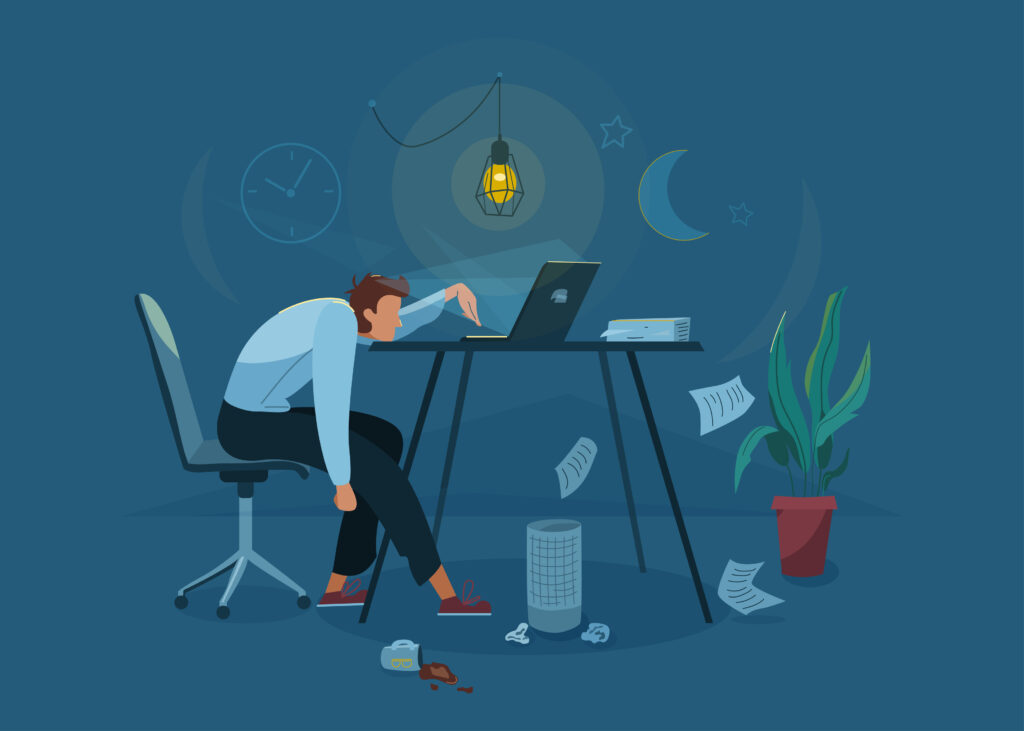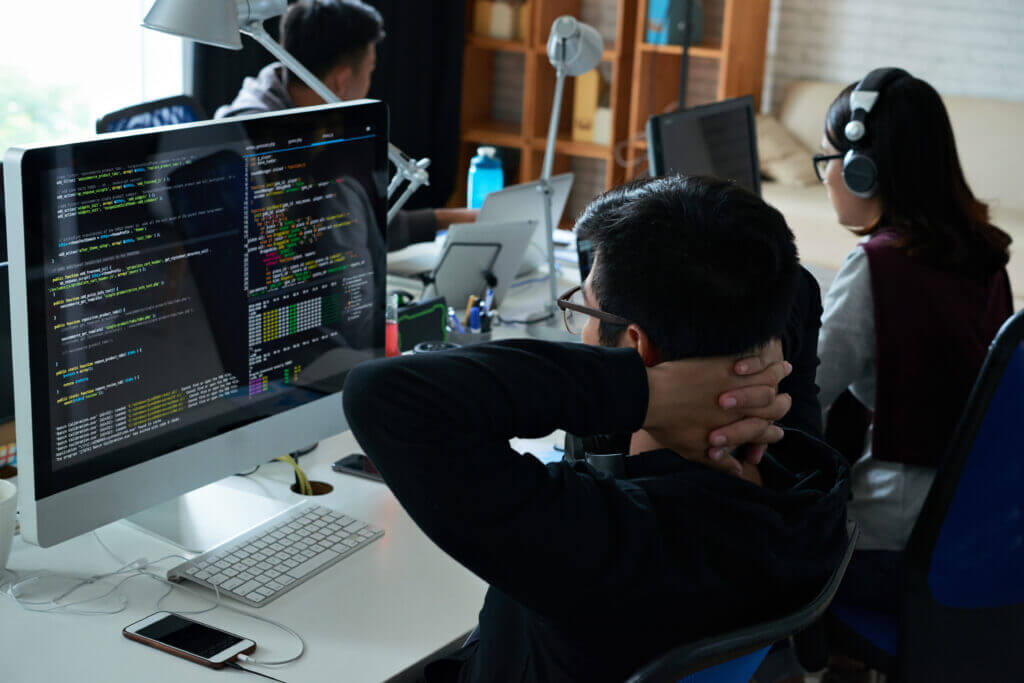Facing the Challenges of Software Engineer Burnout in Healthcare
Gallup reports that 76% of employees experience burnout on the job at least sometimes. Software engineer burnout in healthcare also happens in the real world.
The Covid-19 pandemic has left many employees experiencing physical and mental fatigue caused by overwork and long hours. And this burnout has a devastating impact on employee happiness and productivity.
Here we’ll break down the causes of burnout and give you some tips on how to combat software engineer burnout in healthcare.
What Is Burnout?

According to the World Health Organization, burnout is a syndrome resulting from chronic workplace stress that has not been successfully managed.
The pandemic has pushed employee stress levels through the roof. While many have appreciated the resulting remote work environment, the change has brought about a new type of pressure on others. The lack of human contact, lack of structure, and Zoom fatigue have left many facing burnout.
Burnout has three characteristics: lack of energy, decreased productivity, and mental distance from the job. Many blame these symptoms on laziness or neglect. However, they could indicate burnout.
How Is Burnout Different From Stress?
Stress and burnout have similar meanings. However, they do not exactly mean the same. Stress is more about “too much,” whereas burnout is generally about “not enough.”
Think of stress as too much pressure to complete something. Burnout signals not enough energy, motivation, or mental capacity to do something. Too much pressure causes stress, but stress alone cannot cause burnout.
How To Detect Software Engineer Burnout in Healthcare
If you think you or your team may be experiencing burnout, there are a few common symptoms to consider. One such symptom is insomnia. A recent study surveyed frontline healthcare workers dealing with burnout during the first peak of the Covid-19 pandemic.
The study found that 55% of these workers indicated they had trouble falling asleep. Other symptoms of burnout include:
-
- Lack of motivation and energy
-
- Mood swings and tiredness
-
- Isolation
-
- Procrastination and ineffectiveness
-
- Cynicism, a sense of doubt, and indifference
-
- Anxiety and depression for weeks around work
-
- Physical symptoms like muscle pain, extreme physical and mental fatigue, frequent headaches, stomach disorders, dizziness, and shortness of breath
What Are the Causes of Software Engineer Burnout in Healthcare?

The Harvard Business Review reported that the average person spends 90,000 hours in the work environment over their lifetime. It’s no wonder the workplace plays a significant role in contributing to burnout. Many workplace factors can lead to experiencing burnout.
-
- Monotonous tasks
-
- Pressure of deadlines
-
- Misaligned values
-
- Weak programming culture
-
- Huge workload
-
- Lack of role clarity
-
- Lack of communication from management
Remote Work Burnout vs In-Office Burnout: Is There a Difference?

The new remote work environment has many employees burnt out. So much so that 33% of remote workers said they don’t want to work from home in the future.
Take, for instance, Tom Larrow, an IT manager in Ohio. He says that he was so burnt out that he had a panic attack as he tried to give his diabetic son insulin and couldn’t figure out the dosage. “I could not, in my head, divide 50 by 25,” he recalled. “I had to pull out a calculator and do that very, very basic math because my brain was so fried.”
A Zippia study shows that 67% of remote workers report feeling pressured to be available all the time. That same study indicates that 63% of workers feel they’re discouraged from taking time off. Many other factors also aggravate burnout for remote employees.
-
- Unclear expectations
-
- The blur between home and working hours
-
- Decision fatigue
-
- Micromanaging
-
- Interruptions due to numerous video meetings
It’s not just the pressures of remote work that causes burnout. In-office burnout is just as much a problem.
-
- No Influence Over Work: Employees want to feel empowered and in control over their work environment. Things such as work schedule, workload and types of assigned projects impact employee morale. Employees are likely to feel more pressure and stress to meet demands imposed by management.
-
- Unclear Job Expectations: Unclear job expectations cause confusion and lead to unnecessary rework. This type of environment can decrease motivation and deplete employees’ energy.
-
- Dysfunctional Workplace Dynamics: Office politics distract from daily work. Navigating office politics while keeping up with their work can be stressful for many.
How To Manage Healthcare Software Employee Burnout?

Burnout is a serious matter. It can lead to personal and professional dissatisfaction, social isolation, relationship problems, and mental health problems such as depression. In a recent poll by Blind professional network, 83% of employees expressed that it’s very important to them that their employer provide flexible working hours as a means to address employee burnout. There are several proactive steps managers can take to combat the problem, such as:
-
- Measure burnout with Maslach’s Burnout Inventory
- Measure burnout with Maslach’s Burnout Inventory
-
- Allow and encourage healthy habits
-
- Organize team bonding activities
-
- Allow flexible scheduling
-
- Encourage vacations
-
- Set realistic deadlines and goals
-
- Clear communication
-
- Create a culture of recognition
-
- Offer professional development and training
Case Studies: How Do Others Tackle Healthcare Software Burnout?

Many companies are taking steps to tackle burnout and help employees cope. The most common theme among these steps is to focus on self-care. Here are a couple of case studies to give you a few ideas.
How Devetry Tackles Burnout
Allan Wintersieck, CEO at Devetry:
“Disconnect! Everyone is different in what they enjoy, but the one constant seems to be: disconnect completely from your work for 4+ days. It can be easy in the heat of the moment to think, ‘I can’t possibly step away from work right now; there’s too much to do,’ but oftentimes it’s more positive in the long term to disconnect a bit. Find a balance that works for you, and remember that your own mental and physical health always comes first. If you realize your developers are burning out, immediately talk to them about finding a balance between the business goals and their need to take some time off.”
How Cover Manages Burnout
Anand Dhillon, CTO at Cover:
“During our recent Cover Auto launch in Texas, one of our engineers and I were literally working till 2-3 am every day for an entire month. One day––a Saturday––we just decided that we had to take a break. We took the day off and went golfing. This was an example of a day where burnout had accumulated to the point where neither of us could work.
Personally, I find that I’ll get a combination of irritable and apathetic when I get to the point of burnout. I can definitely sense myself being less productive in meetings.
Once you burn out, it’s super important to focus on your health; make sure you’re exercising, eating healthy, sleeping enough, and finding ways to relieve stress. I personally like meditating to relieve stress. Also, delegating more and taking an extra day off here and is very powerful.”
KMS: Helping You Combat Software Engineer Burnout in Healthcare
Need help combating burnout in the healthcare industry? KMS can provide that support to your healthcare organization with our dedicated team of experienced healthcare developers. Click here to find out more about how KMS Healthcare can help you overcome software engineer burnout in healthcare practices and healthcare systems.
